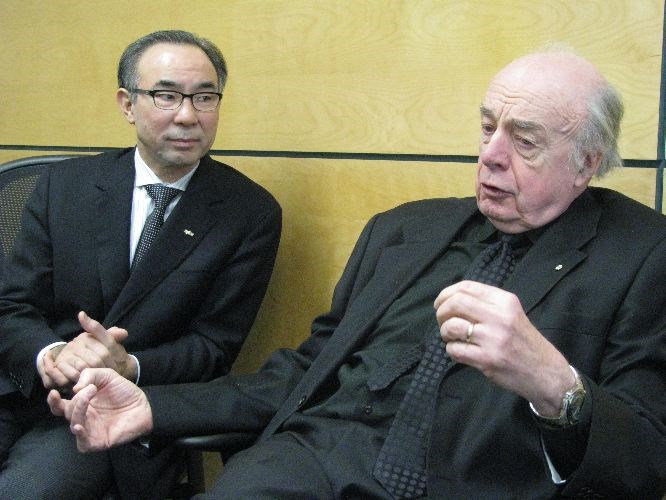John MacDonald is used to being involved in projects that create a cosmic buzz.
As one of the founders of Canada's largest aerospace company -- MacDonald Dettwiler and Associates -- he oversaw development of the remote robotics systems for the Canadarm, which allowed astronauts to service and repair satellites and the space shuttle.
And in all his years of teaching electrical engineering at the Massachusetts Institute of Technology and UBC, none of his students made more of a global impact than a guy from New Jersey named Edwin.
The world knows him as Buzz Aldrin, the second human to walk on the moon, and before he joined the space program, Aldrin was one of MacDonald's lab students.
"It was a lab course, it wasn't a big deal, but I got to know the guy and I haven't seen him since, so he wouldn't remember me," said MacDonald, who took on the role of chancellor at UNBC in 2009. "Buzz was a grad student working on his doctorate at the time. He was very disciplined, and I noticed that."
Like many space junkies, the Prince Rupert-born MacDonald grew up fascinated with idea of putting a camera in space to observe the Earth. Years later, after forming MDA with fellow British Columbian Werner Dettwiler, MacDonald had his answer.
"MDA ended up being one of the top companies in the world in observing the earth from space and developing the technology to do that and the culmination of that for me was RADARSAT-2, which is Canada's main Earth observation satellite," MacDonald said.
"I remember being a little boy, wondering what the earth looked like from space. Well I ended up doing it. Now we do it for the other planets as well."
MDA has long been involved in the International Space Station and helped develop the Mars rover Opportunity, which is entering its ninth year of exploring the red planet. Now with 3,000 employees, the company has signed on with NASA for future lunar and planetary exploration missions and is also involved in building surgical robots for magnetic resonance image-guided brain surgery.
"In terms of how you use it, it's essentially the same problem as doing it on a space vehicle," said MacDonald. "Shuttle astronauts generally can't see the thing that they're doing, they have to use some kind of television system. In the medical case, it's a minute tiny little thing, and in the space case it's a huge arm that has to operate in zero gravity."


